3D-printing robot by Joris Laarman draws freeform metal lines
News: Dutch designer Joris Laarman has developed a 3D-printing technique that allows a robot to draw metal structures in mid-air.
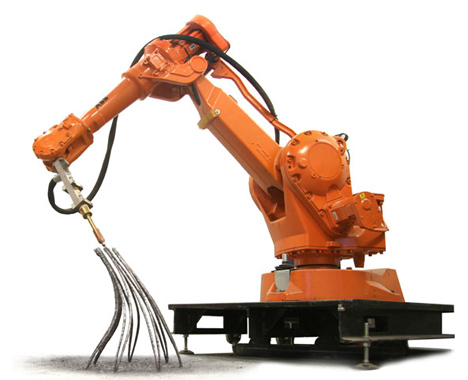
Joris Laarman's MX3D-Metal method combines a robotic arm typically used in car manufacturing with a welding machine to melt and then deposit metal, to create lines that can be printed horizontally, vertically, or in curves without the need for support structures.
Following on from the machine Laarman developed last year that used a quick-drying resin, this method of printing makes it possible to create 3D objects on any given surface independent of inclination and smoothness. The technique can be used to print with metals including stainless steel, aluminium, bronze or copper.
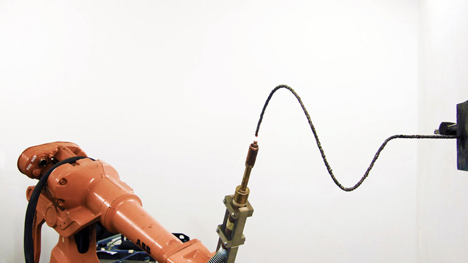
"By adding small amounts of molten metal at a time, we are able to print lines in mid air," explained Laarman.
The metal lines can also be printed to intersect with each other, creating self-supporting structures, and the robotic head can build up several separate lines at once by adding to each one in turn.
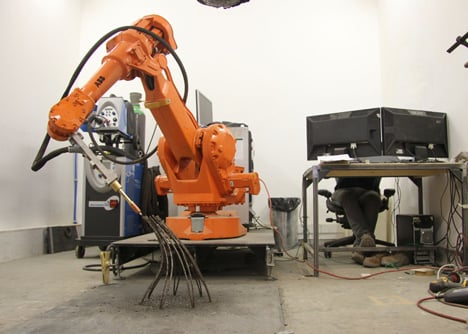
The designer is currently using the technique to make a 3D-printed metal bench, which will go on display as part of an exhibition of his work at Friedman Benda Gallery in New York this May, though the final form of the piece is still in development.
"The nice thing about working with new technology like this is that the formal language of the design follows what is possible with the technique," he said. "While the technique is developing the possibilities change."
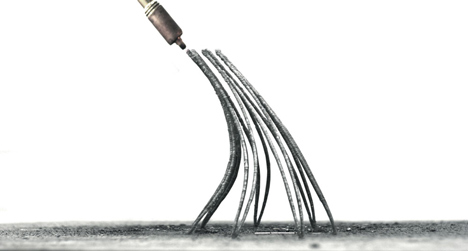
However, Laarman believes the approach can also be used 3D-printed architectural constructions and concrete reinforcements. "Because the technology is not affected by gravity, it could even be used in space," he said.
Previously, printing with metal was achieved through selective laser melting (SLM) or electron beam printing; SLM uses a high-powered laser beam to create three-dimensional parts by fusing fine metallic powders together, while electron beam printing uses a similar technique with an electron beam and is printed inside a vacuum. However, these techniques are expensive and produce very small objects.
"All these are ways to print in metal on a very small scale," said Laarman. "The method we developed is for a larger scale and doesn't need a support structure like all other methods."
Laarman's technique isn't restricted to just printing in layers either, becuse the print head of MX3D-Metal can approach the object from any angle and print lines that intersect in order to create a self-supporting structure. "3D printing like this is still unexplored territory and leads to a new formal language that is not bound by additive layers," he said.
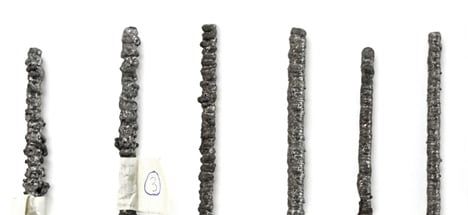
The process can also be scaled down to create more refined structures without the need for scaffolding or other supportive add-ons.
The software that controls the robot arm and welder was developed in collaboration with American 3D software company Autodesk. "The combination of robot/welding is driven by different types of software that work closely together," Laarman revealed, adding that the software will eventually be developed into an interface that allows the user to print directly from design programs.
"Vertical, horizontal or spiraling lines require different settings, such as pulse time, pause-time, layer height or tool orientation," he continued. "All this information is being incorporated in the software."
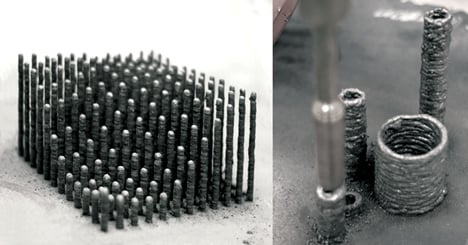
Last year, Petr Novikov and Saša Jokić, two interns at Joris Laarman Lab created the MX3D-Resin, which allowed the creation of chunky three-dimensional rods from a polymer, rather than slowly building up two-dimensional layers like a standard 3D printer. From these initial experiments, Laarman discovered a way of doing the same with metal.
Laarman graduated from the Design Academy Eindhoven in 2003, and first received international recognition for his decorative Heatwave radiator produced by Dutch design brand Droog. He set up his own lab in 2004 in Amsterdam with partner and film-maker Anita Staris. Laarman’s previous work has included chairs designed to mimic the proportion and functionality of human bone.